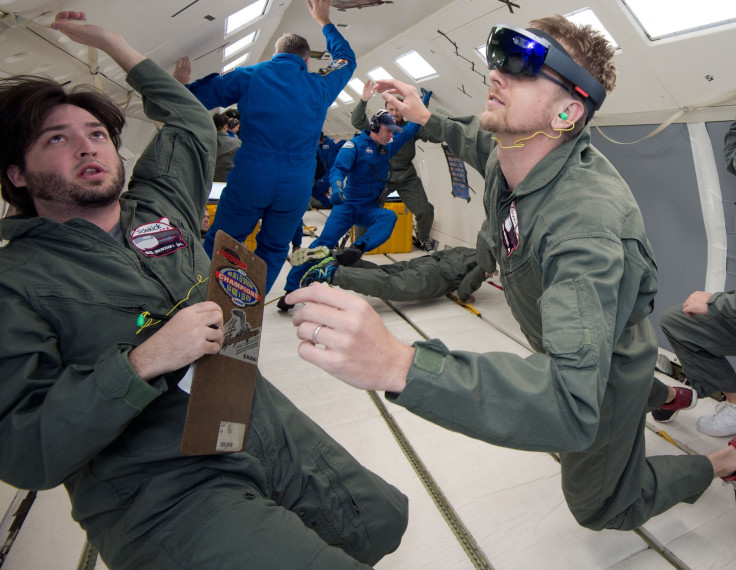HoloLens In Space: International Space Station Astronauts Use Microsoft's VR/AR Headset For Work And Play

The astronauts aboard the International Space Station have a pretty full schedule during their six-month mission away from Earth's gravity. Despite the workload, there are times when astronauts can have some fun. After the Microsoft Hololens launched to the space station aboard the Orbital ATK Cygnus spacecraft Dec. 6, 2015, NASA's Scott Kelly and British astronaut Tim Peake were able to test out the device in February and even played a game where they battled against swarms of aliens.
Astronauts participate in hundreds of scientific investigations studying the various effects of microgravity on everything from the human body to fire to plant growth. Astronauts also have to spend several hours exercising to maintain muscle mass and prevent bone loss. With the Hololens, Microsoft and NASA partnered for Project Sidekick to bring the virtual reality/augmented reality headset to the space station. The HoloLens could be used to create a virtual world aboard the space station where astronauts and ground control on Earth could work together on various projects.
This #saturdaymorning checked out the @Microsoft #HoloLens aboard @Space_Station! Wow! #YearInSpace pic.twitter.com/OZlWmzWjsY
— Scott Kelly (@StationCDRKelly) February 20, 2016
There are two components to Project Sidekick that could prove beneficial to future space station crew or astronauts journeying to Mars. The Remote Expert Mode uses the HoloLens and Skype to create a virtual environment for collaboration between a crew member and a ground control operator. The Earth-based operator can highlight different tasks in the space station while talking through each step of the operation with the astronaut. Procedure mode maps a holographic illustration over various items to guide astronauts in their mission, which could reduce training time or provide support during deep space exploration missions where there are delays in communication, according to NASA.
"Sidekick creates a virtual-reality world on the International Space Station so we can 'drop' markers, procedures or documents in one location and they will still be there if we leave the module to return later," Peake explained. "Ground control can come into our virtual world and we can use it for doing tasks together – for example the VR world can point out exactly what switches to flip or which screws to loosen, handles to turn and even guide us to storage locations."
Peake and Kelly did have some time to demo "Project X-Ray," an alien invasion game where players shoot creatures using one's surroundings as the battle zone. For the astronauts, the battlefield was the space station instead of a living room.
< iframe width="560" height="315" src="https://www.youtube.com/embed/ IAuhDAMpM74 " frameborder ="0" allowfullscreen >
© Copyright IBTimes 2025. All rights reserved.





















